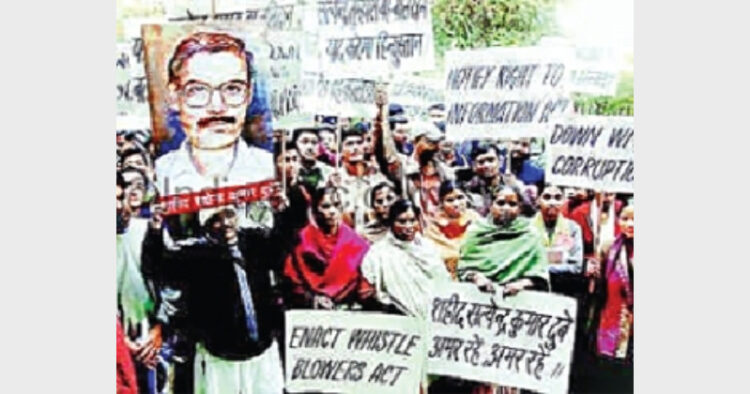Cover Story: An Unsung Hero
Intro: His daring struggle against corruption cost him his life, but Satyendra Dubey taught us that is necessary to challenge and expose evil forces prevalent in society for nations good; even if it comes at the cost of your life.
Very few people know about Satyendra Dubey, the young whistleblower who exposed corruption in the Golden Quadrilateral Highway Project (GQHP) in Bihar in 2003, and died a martyr. An Indian Engineering Service (IES) officer, he was a Project Director in the National Highway Authority of India (NHAI). On November 27, 2003, he was gunned down in Gaya while fighting corruption in the ambitious GQHP. But, today he is a less known and less recognised icon of contemporary India.
A Civil Engineer by qualification from IIT, Dubey started his career as an employee of the National Highway Authority of India and rose from the lowest post to become an Assistant Project Manager at Koderma, Bihar, now in Jharkhand, in a very short span of time. While working on the GQHP, he detected large scale irregularities in handling of public funds. While taking note of things promptly, he brought the rot in the public system into the notice of senior officials.
He exposed the poor quality of work in the GQHP and exposed that kickbacks were being offered to higher officials to push the tenders. He took bold step against the taint in the system and dealt with the contractors with strictness, knowing well that many higher rank officials of NHAI were in league with the unscrupulous contractors. As a first step against it, he withheld payment against a number of bills put up by contractors. But he was not rewarded for his act; rather the higher authorities of the department chose to transfer him to another location where, however, he carried his work with the same degree of honesty and strictness.
As he was a meritorious person he went on to clear a number of professional departmental examinations of NHAI and became Project Director. However, that only increased the number of his detractors as well as enemies.
As a result, on the fateful night of November 27, 2003, he was shot dead while he was coming back from a marriage party. Later during investigations it was found that police as well as CBI officials were involved in this heinous crime.
He leaves behind himself a trail of courageous fight that is really unmatchable. His story will remain fresh in public memory for a long time. And his bold stand will be an inspiration for thousands of young men and women who want to start a crusade against corruption which is eating into the vitals of our country.
Sadly, even after 11 years of his death, corruption has only become more rampant in our country. 30 whistleblowers have been murdered since he was killed. A Bill to protect whistleblowers who expose corruption and wrongdoings was introduced in the Parliament four years ago. But, unfortunately this law has not been passed yet.
P Manjunath, Satyendra Dubey and Lalit Mehta including many other whistleblowers are people who have died trying to expose corruption in the country- and the list seems to be neverending in India.
Thirty-six-year-old Mehta, an activist with Right to Food and Right to Work, was murdered allegedly because he tried to highlight corruption in the implementation of the National Rural Employment Guarantee Programme in Jharkhand. Manjunath was shot dead at a petrol pump in Gola area in Lakhimpur Kheri district after he threatened to cancel petrol pump owners licence for selling spurious fuel.
Dubey who died like a martyr fighting battle against criminal corporate-official nexus is single handedly a harbinger of change. He was more than a whistleblower. He was like an unsung hero who has left behind himself a trailblazing account of defiance against corruption which has become common place in our country. His life is an inspiration for all of us to contribute our bit to make India corruption free.
-Atul Sehgal (The writer is a senior columnist)














Comments